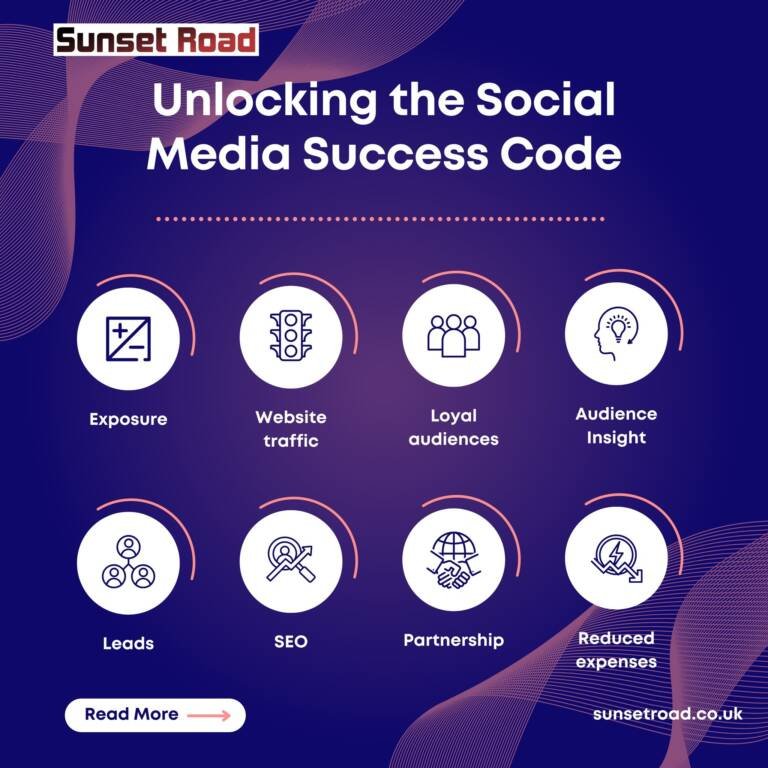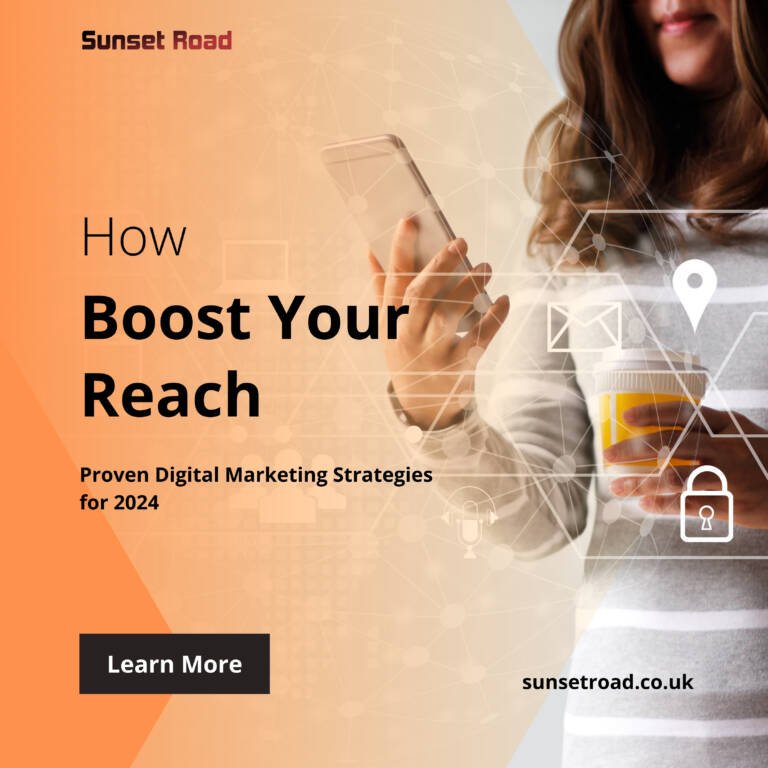Mastering Social Media Marketing: Proven Strategies for Building a Stellar Online Presence
In today’s digital landscape, a robust social media strategy is no longer optional for businesses; it’s essential. Social media platforms offer unparalleled opportunities to connect with your audience, build brand awareness, and drive engagement. However, with so many platforms and constant changes in algorithms, creating an effective social media strategy can be challenging. This blog will guide you through the key tips and strategies to build a stellar social media strategy that aligns with your business goals.
1. Define Your Goals
Before diving into social media, it’s crucial to define what you want to achieve. Your goals will shape your entire strategy, from the platforms you choose to the content you create. Common social media goals include:
Brand Awareness: Increase the visibility of your brand.
Engagement: Foster a community around your brand and encourage interaction.
Lead Generation: Capture potential customer information to nurture sales.
Customer Service: Provide timely support and build customer loyalty.
Each goal requires a different approach, so be specific about what you want to accomplish. For example, if your goal is to generate leads, your strategy should focus on creating content that drives traffic to your website or landing pages.
2. Know Your Audience
Understanding your target audience is fundamental to any successful social media strategy. You need to know who they are, what they care about, and where they spend their time online. Conduct market research to gather data on your audience’s demographics, interests, and behavior.
Use tools like Google Analytics, Facebook Insights, and Twitter Analytics to get a clear picture of your audience. Create detailed buyer personas to represent different segments of your audience. These personas should include information such as age, gender, occupation, interests, pain points, and social media preferences.
3. Choose the Right Platforms
![]()
Not all social media platforms are created equal. Each platform has its strengths and weaknesses, and choosing the right ones for your business is key to success. Here’s a quick overview of some popular platforms and their primary uses:
Facebook: Best for building communities and sharing diverse content types, including videos, images, and links.
Instagram: Ideal for visually-driven brands; great for showcasing products, behind-the-scenes content, and user-generated content.
Twitter: Excellent for real-time updates, news, and customer service interactions.
LinkedIn: The go-to platform for B2B marketing, professional networking, and thought leadership content.
Pinterest: Perfect for brands in the fashion, home décor, and DIY niches; focuses on visual content like infographics and photos.
Match your platform choices with your audience’s preferences. If your target audience is predominantly professionals, LinkedIn should be a priority. If your brand is visually oriented, focus on Instagram or Pinterest.
4. Create a Content Plan
Content is the heart of any social media strategy. To keep your audience engaged, you need a mix of content that entertains, educates, and informs. Start by defining your content pillars—core themes that align with your brand and resonate with your audience. For example, a health and wellness brand might focus on pillars like nutrition tips, workout routines, and mental health advice.
any social media strategy. To keep your audience engaged, you need a mix of content that entertains, educates, and informs. Start by defining your content pillars—core themes that align with your brand and resonate with your audience. For example, a health and wellness brand might focus on pillars like nutrition tips, workout routines, and mental health advice.
Plan your content calendar in advance, ensuring a good balance between different content types:
Educational Content: Blog posts, how-tos, and infographics that provide value to your audience.
Entertaining Content: Quizzes, memes, and videos that entertain and engage your audience.
Promotional Content: Posts that highlight your products, services, and special offers.
User-Generated Content: Encourage your audience to share their experiences with your brand; repost their content to build community.
Remember to tailor your content to the platform you’re using. What works on Instagram might not be as effective on LinkedIn.
5. Engage with Your Audience
Social media is a two-way street. Engaging with your audience is crucial for building relationships and fostering loyalty. Here are some ways to engage effectively:
Respond to Comments and Messages: Show your audience that you value their input by responding to comments and messages promptly.
Ask Questions: Encourage interaction by asking questions in your posts, such as “What do you think?” or “Which option do you prefer?”
Host Contests and Giveaways: These can significantly boost engagement by incentivizing your audience to participate.
Use Polls and Quizzes: These interactive content types are great for increasing engagement and getting feedback from your audience.
Share User-Generated Content: Reposting content from your followers shows appreciation and strengthens your community.
6. Leverage Influencer Partnerships
Influencers can amplify your brand’s reach and credibility. Partnering with influencers who align with your brand values and target audience can help you tap into their loyal followers. When choosing influencers, consider:
Relevance: The influencer’s niche should align with your brand.
Engagement: Look for influencers with high engagement rates, not just a large number of followers.
Authenticity: Choose influencers who genuinely believe in your brand and can create authentic content.
Micro-influencers, with smaller but highly engaged audiences, can be particularly effective for niche markets. They often have stronger connections with their followers, leading to higher trust and conversion rates.
7. Analyze and Adjust
Social media is dynamic, and what works today might not work tomorrow. That’s why it’s essential to regularly analyze your performance and adjust your strategy accordingly. Use analytics tools to track key metrics such as:
Reach: The number of unique users who see your content.
Engagement: The number of likes, comments, shares, and clicks your content receives.
Conversion Rate: The percentage of users who take a desired action, such as signing up for a newsletter or making a purchase.
Return on Investment (ROI): The overall effectiveness of your social media efforts in achieving your goals.
Regularly review your analytics to identify trends, understand what’s working, and make data-driven decisions. For instance, if you notice that video content is generating more engagement than images, you might want to increase your focus on video production.
8. Stay Updated with Trends
The social media landscape is constantly evolving, with new trends, features, and algorithms emerging regularly. To stay ahead of the curve, it’s crucial to keep up with industry trends and adapt your strategy as needed. Here’s how to stay updated:
Follow Industry Blogs and Influencers: Keep an eye on blogs, influencers, and thought leaders in the social media space to stay informed about the latest trends.
Join Social Media Communities: Engage in online communities and forums where social media marketers share insights and strategies.
Experiment with New Features: Don’t be afraid to test new features and content formats as they become available on platforms like Instagram, TikTok, or LinkedIn.
Attend Webinars and Conferences: Participate in webinars, conferences, and workshops to learn from experts and network with other professionals.
By staying updated, you can leverage new opportunities to enhance your strategy and keep your audience engaged.
9. Optimize for Mobile
With the majority of social media users accessing platforms via mobile devices, optimizing your content for mobile is non-negotiable. Here’s how to ensure your content is mobile-friendly:
Use High-Quality Images and Videos: Ensure your visuals are clear and optimized for mobile viewing.
Keep Text Concise: Mobile screens are smaller, so keep your captions and text brief and to the point.
Utilize Vertical Formats: Platforms like Instagram and TikTok favor vertical content, so tailor your videos and images accordingly.
Test on Multiple Devices: Before posting, test your content on different devices to ensure it looks great everywhere.
Mobile optimization not only enhances user experience but also boosts engagement and reach.
10. Budget for Paid Advertising
While organic reach is valuable, social media advertising can significantly amplify your strategy. With paid ads, you can target specific demographics, interests, and behaviors, ensuring your content reaches the right audience. When planning your budget, consider the following:
Ad Types: Choose from various ad formats like image ads, video ads, carousel ads, and story ads based on your goals.
Targeting Options: Utilize advanced targeting options to reach your ideal audience.
Retargeting: Implement retargeting campaigns to re-engage users who have interacted with your brand before.
A/B Testing: Test different ad variations to determine what resonates best with your audience.
Paid advertising can be particularly effective for driving traffic, increasing conversions, and boosting brand awareness.
Conclusion
Building a stellar social media strategy is a multi-faceted process that requires careful planning, ongoing engagement, and a willingness to adapt. By defining clear goals, understanding your audience, choosing the right platforms, creating compelling content, and continuously analyzing your efforts, you can create a social media strategy that drives success for your business. Remember, social media is not just about broadcasting your message; it’s about building relationships, fostering community, and delivering value to your audience. Start implementing these tips and strategies today, and watch your social media presence soar!












